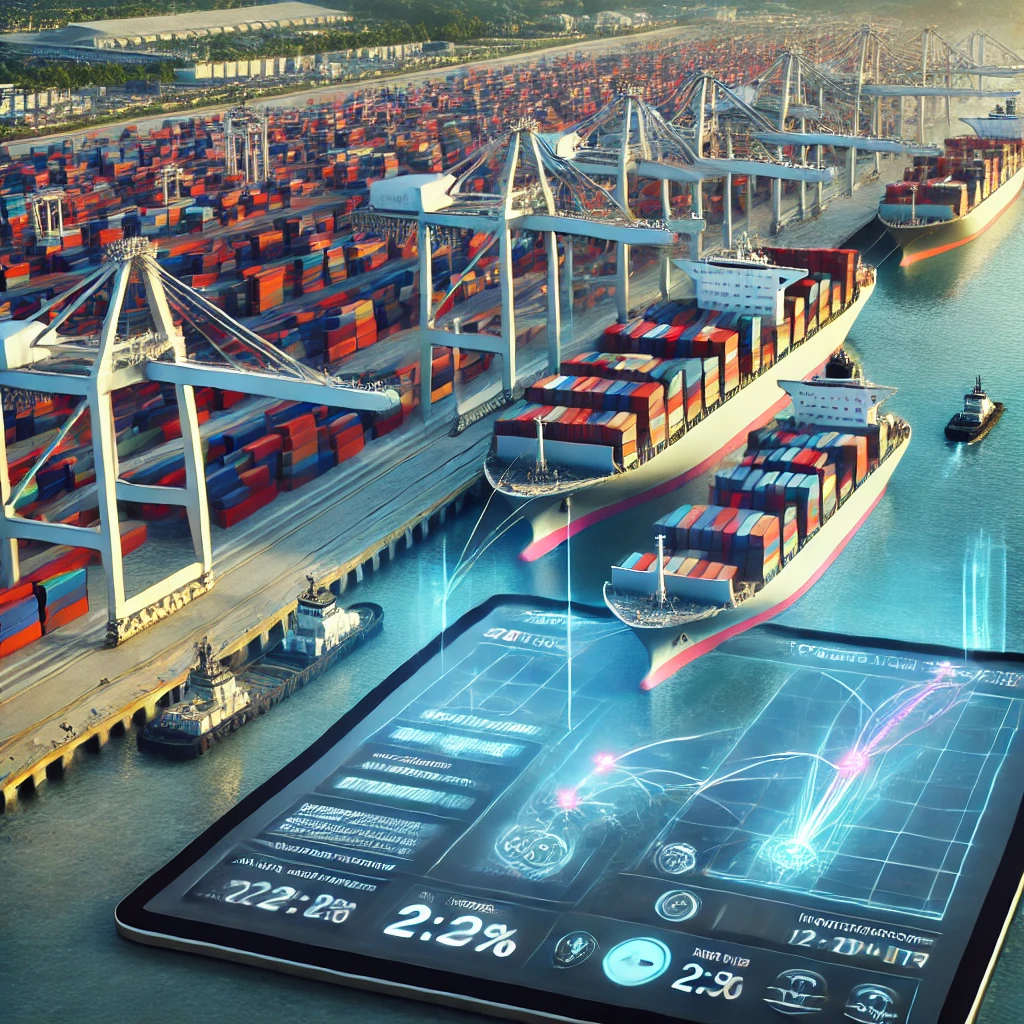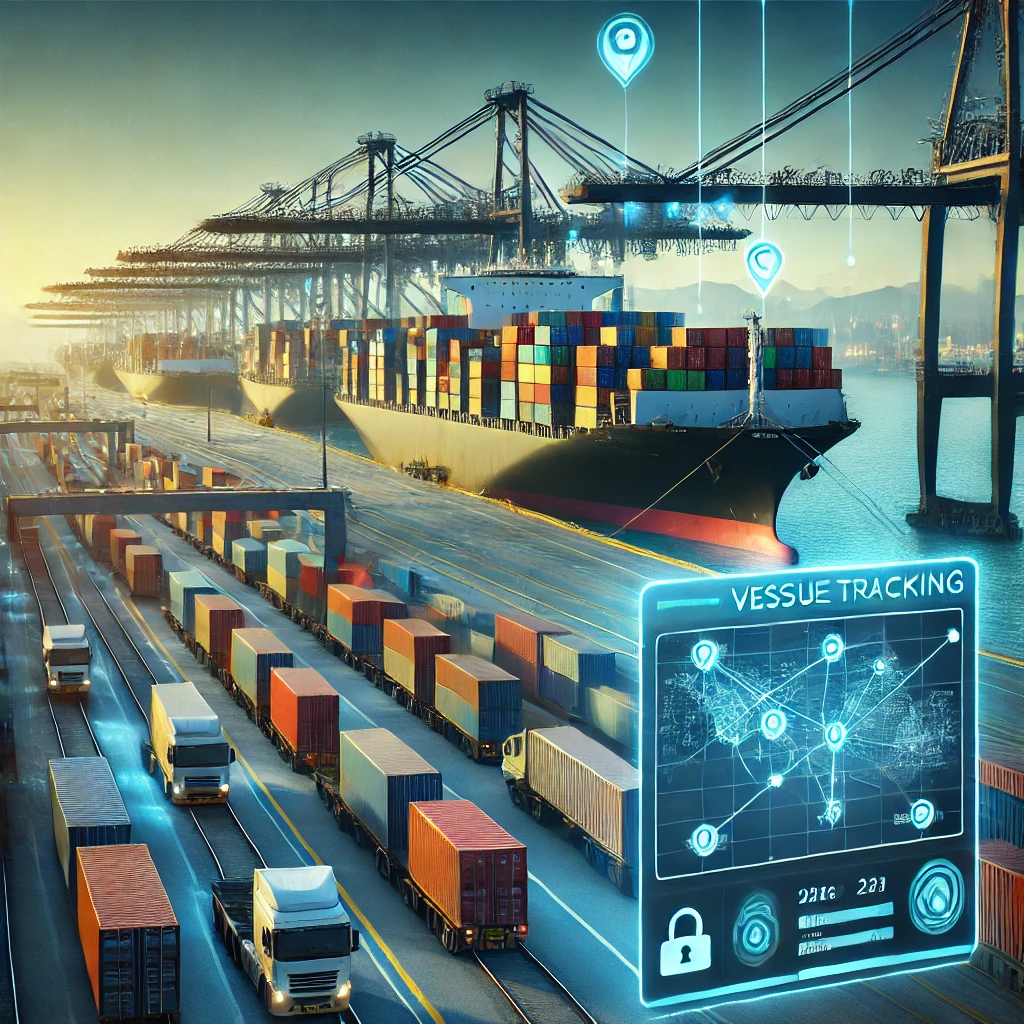A Beginner’s Guide to Savannah Vessel Tracking
In this guide, we’ll explore everything you need to know about Savannah vessel tracking, including its key features, tracking methods, benefits, and how to use it for supply chain optimization. 🚢📦

What Is Savannah Vessel Tracking?
Savannah vessel tracking is the real-time monitoring of cargo ships as they arrive, depart, and navigate through the Port of Savannah. This system provides accurate vessel locations, estimated arrival times, and cargo details, allowing businesses to plan logistics efficiently.
📌 Key Features of Savannah Vessel Tracking:
✔ Live GPS Tracking – View real-time vessel locations on a digital map.
✔ Estimated Arrival & Departure Times – Predict shipping schedules.
✔ Cargo Details & Ship Information – Know what’s being transported.
✔ Port Traffic & Congestion Updates – Plan ahead for delays or rerouting.
✔ Integration with Supply Chain Management Systems – Improve logistics efficiency.
💡 Example: A retailer expecting apparel shipments from China can use Savannah vessel tracking to monitor when the ship arrives, allowing them to coordinate warehouse space and trucking logistics accordingly.
How Does Savannah Vessel Tracking Work?
Savannah vessel tracking relies on advanced maritime technology to provide real-time data on ships entering and leaving the port. Here’s how it functions:
✅ 1. AIS (Automatic Identification System) Technology
✔ Each ship transmits real-time location data via satellite.
✔ AIS signals provide ship name, speed, direction, and destination.
✔ Used by port authorities, logistics firms, and shipping companies.
✅ 2. GPS & Satellite Tracking
✔ Ships are tracked using global positioning systems (GPS).
✔ Satellite communication allows for continuous monitoring, even in remote areas.
✅ 3. Port of Savannah’s Online Tracking Tools
✔ The Georgia Ports Authority (GPA) offers vessel schedules, cargo status updates, and real-time ship tracking.
✔ Businesses can access live port conditions to plan their shipments efficiently.
💡 Example: A logistics manager can check the Port of Savannah’s vessel tracking portal to see when a delayed container ship is expected to dock.
How to Track Vessels in Savannah: Step-by-Step Guide
Step 1: Choose a Vessel Tracking Platform
✔ Use online tools like MarineTraffic, VesselFinder, or FleetMon.
✔ Check the Georgia Ports Authority (GPA) vessel schedule.
Step 2: Enter Vessel or Container Information
✔ Search using the ship’s name, IMO number, or tracking ID.
✔ For cargo shipments, use the container number or bill of lading (BOL).
Step 3: Monitor Real-Time Vessel Location
✔ View ship movements, estimated arrival times, and port traffic conditions.
✔ Adjust logistics planning based on updated ETAs (Estimated Time of Arrival).
Step 4: Plan Trucking & Warehouse Operations
✔ Align warehouse staffing, trucking schedules, and distribution with vessel arrivals.
✔ Use tracking data to optimize supply chain efficiency and cost savings.
💡 Example: A food distributor tracking a refrigerated cargo ship can plan warehouse cold storage in advance, ensuring no delays in unloading perishable goods.
Savannah Vessel Tracking vs. Other U.S. Ports
Feature | Port of Savannah | Port of Los Angeles | Port of Houston | Port of New York/New Jersey |
Primary Trade Route | Asia, Europe, South America | Asia, Pacific | Gulf of Mexico, South America | Europe, Asia |
Tracking Tools Available | AIS, GPS, Georgia Ports Authority | AIS, GPS, LA Port Tracking | AIS, GPS, Houston Port Schedule | AIS, GPS, NY/NJ Vessel Schedule |
Port Congestion | Low-Moderate | High | Moderate | High |
Best For | East Coast & Southeast U.S. shipments | West Coast imports from Asia | Oil & energy shipments | High-volume retail & e-commerce trade |
💡 Key Takeaways:
✔ Savannah’s vessel tracking system is highly efficient and user-friendly.
✔ It experiences less congestion than Los Angeles and New York, making it a faster alternative for East Coast shipping.
✔ Ideal for cargo coming from Asia and Europe into the southeastern U.S..

When to Use Savannah Vessel Tracking?
✅ Best Situations for Using Savannah Vessel Tracking:
✔ When shipping goods to/from Asia, Europe, or South America via the East Coast.
✔ When coordinating warehouse logistics and trucking schedules.
✔ When monitoring vessel delays to adjust supply chain operations.
🚫 When It May Not Be the Best Choice:
❌ If shipping through West Coast ports, tracking systems from Los Angeles or Seattle may be more relevant.
❌ If dealing with bulk cargo or energy shipments, Houston’s tracking tools may be more specialized.
The Future of Vessel Tracking in Savannah
As technology advances, vessel tracking at the Port of Savannah is becoming even more accurate, efficient, and automated. Key future developments include:
🚀 AI-Powered Predictive Analytics – Smarter ETA calculations using machine learning.
🚀 Blockchain-Enhanced Shipping Transparency – Improved cargo tracking security.
🚀 5G & IoT Integration – Faster and more reliable real-time tracking.
Businesses that embrace these innovations will gain a competitive edge in logistics and supply chain management.

Conclusion
Savannah vessel tracking is essential for businesses involved in international trade, providing real-time visibility, logistics efficiency, and cost-saving opportunities.
✔ Best for: Companies shipping via the Port of Savannah, looking to optimize cargo tracking and supply chain operations.
✔ Challenges: Weather conditions, port congestion, and shipping delays require constant monitoring.
By using Savannah vessel tracking tools, businesses can improve shipment planning, reduce risks, and streamline logistics processes. 🚢📦💼
